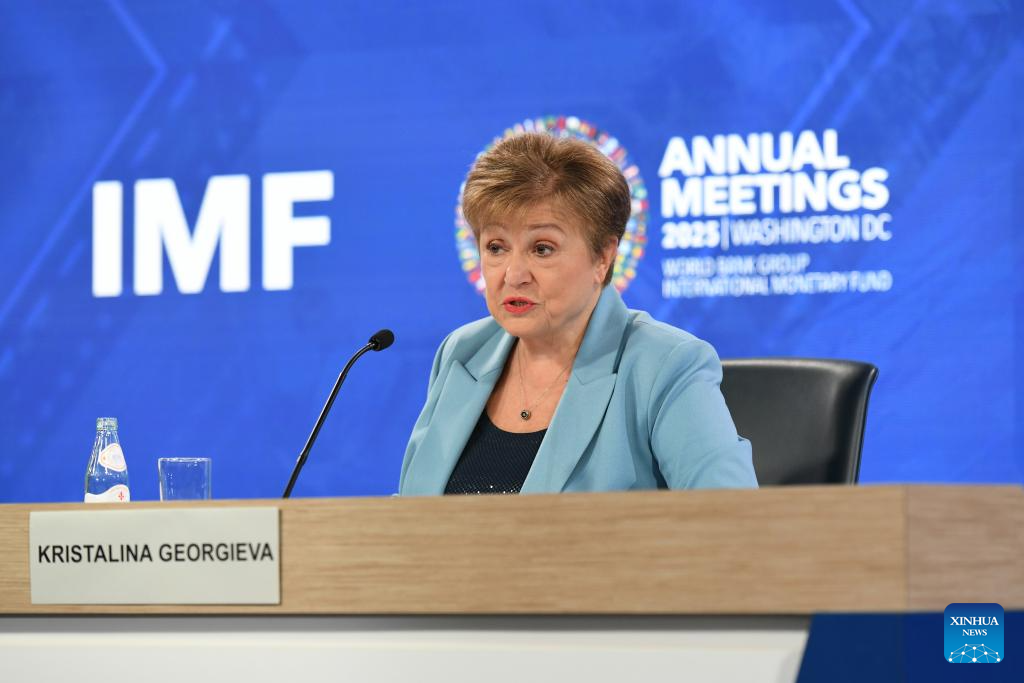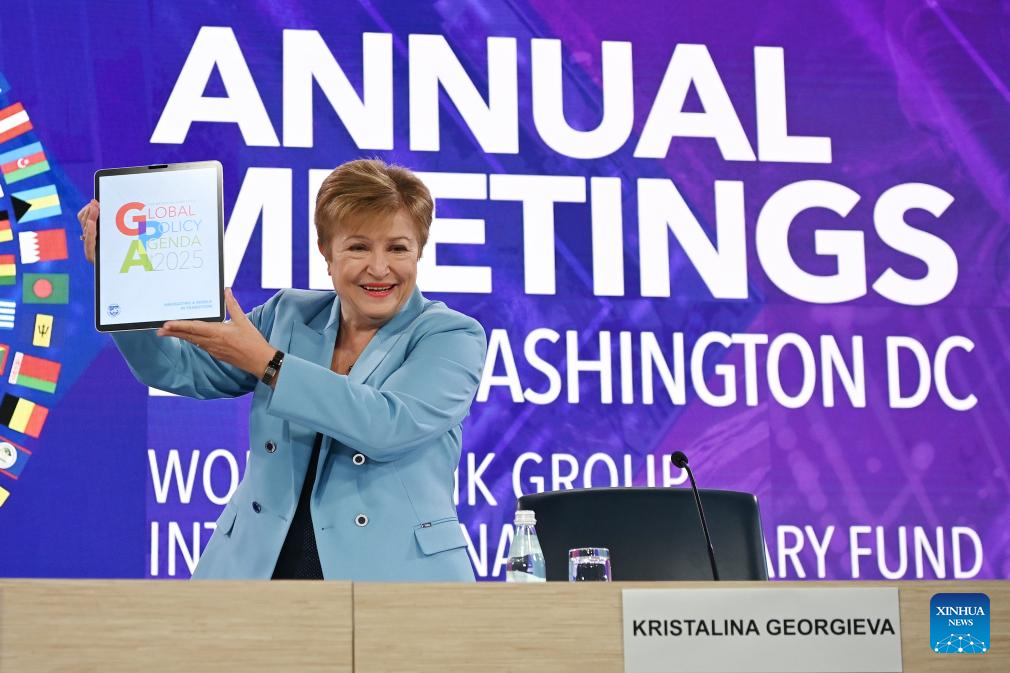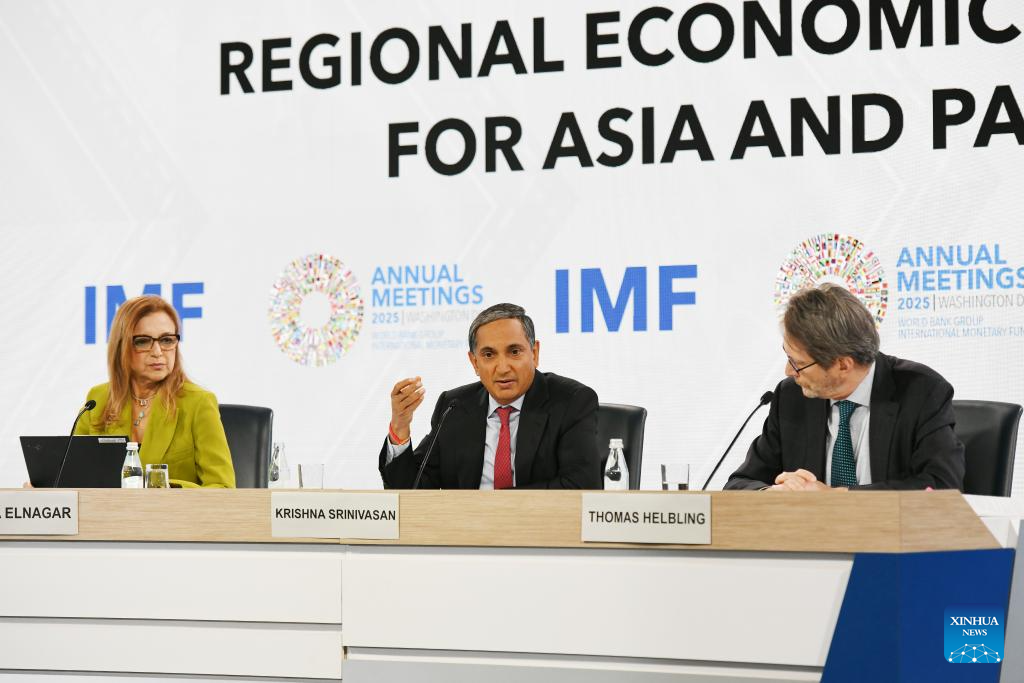
WASHINGTON - International Monetary Fund (IMF) Managing Director Kristalina Georgieva said Thursday that artificial intelligence could boost productivity, but it could also be a source of divergence within countries and across countries.
Noting that the AI investment boom is bringing "incredible optimism", Georgieva told a press briefing during the 2025 Annual Meetings of the World Bank Group and the IMF that AI will contribute to global growth somewhere between 0.1 percent and 0.8 percent, which is "significant".
In its latest World Economic Outlook released Tuesday, the IMF slightly raised its global economic growth projection for 2025 to 3.2 percent, while pointing out that the tariff shock is further dimming growth prospects. Global growth is projected to fall to 3.1 percent in 2026.
"We are stuck in this around 3 percent growth right now. And if we were to extract that kind of boost of growth (from AI), that would be very significant for the world," said Georgieva.
She noted that the IMF has developed the AI preparedness index, which ranks countries on four criteria: digital infrastructure, labor market skills, innovation, and how it penetrates.

The IMF chief also highlighted "a very big distribution from the best to the laggers" in terms of AI adoption.
"So, the risk we see is that we may end up in a world in which there is an increase in productivity, but it is also a source of divergence within countries and across countries," Georgieva said, adding that this is why preparedness really matters.
At the press conference, the IMF managing director unveiled the Global Policy Agenda, which emphasized three overarching priorities - unlock private sector growth, rebuild fiscal space and reduce debt, and reduce global imbalances.
"Uncertainty is here to stay, and change is unstoppable, but with change comes opportunity," she stressed.
Asian economies urged to boost domestic demand, regional integration
At a separate press conference on Thursday, Director of the IMF's Asia and Pacific Department Krishna Srinivasan said Asian economies, faced with downside risks from trade tensions, could boost growth by pivoting more toward domestic demand-driven growth and enhancing regional integration.
"This is a region which is highly dependent on external trade. So anytime there are shocks to global trade, it's going to affect Asia that much more," Srinivasan said.

Responding to a question from Xinhua, the IMF official pointed out that there is always a "silver lining", despite the downside risks stemming from trade uncertainty, debt-related vulnerabilities and other factors.
"Asia has an opportunity to pivot more towards domestic demand-led growth," said Srinivasan, noting that the contribution of domestic demand to growth in the Asia and Pacific region has slowed significantly compared with the pre-pandemic period.
He highlighted the benefits of greater integration within the region: GDP can increase by as much as 1.4 percent over the medium term for all of Asia, and some countries that are more open and linked to global supply chains will benefit a lot more.
According to the IMF's latest forecast, growth in the Asia-Pacific region is projected to slow from 4.5 percent this year to 4.1 percent in 2026.
Despite slower growth, the region will remain the biggest driver of global growth, contributing about 60 percent this year and in 2026, Srinivasan noted, adding that the resilience can be attributed to a front-loading of exports, a tech boom, and accommodative macro policies.


